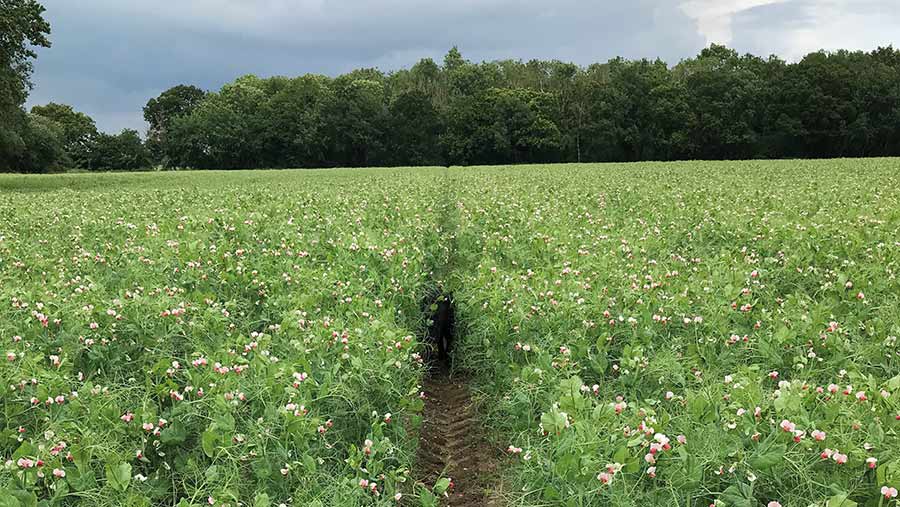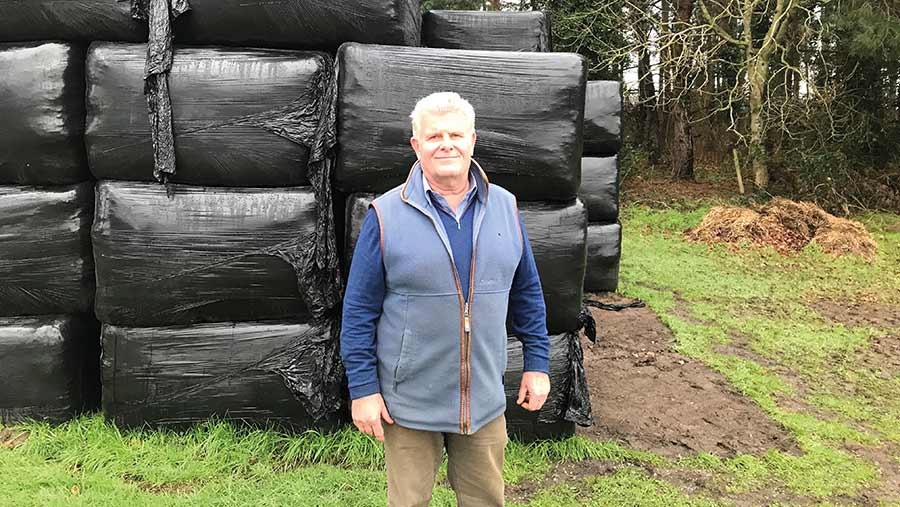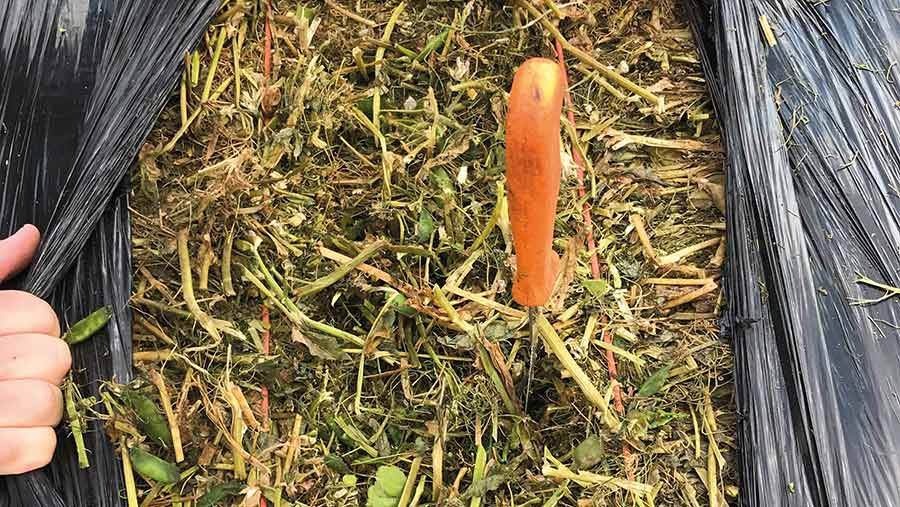Why forage peas earned a place in Norfolk grower’s rotation
 © Charles Davison
© Charles Davison Forage peas are filling a short gap between carrots and milling wheat in the rotation on one Norfolk farm, tapping into a growing market for livestock feed in an area known more for its arable and vegetable crops.
And not only is the protein-rich forage earning an income, it is saving on fertiliser costs too in the subsequent milling wheat crop.
See also: Farmers join forces to grow high-yield low-cost spring beans
In spring 2021, a wet winter had delayed the carrot harvest, recalls grower Charles Davison.
So by the time the ground would be ready for drilling, it was getting a bit late for spring cereals, he says.
Overseas inspiration
After doing some research and seeing how popular forage pea crops are with livestock farmers in the US and New Zealand, he decided to give them a go as a catch crop.
He had dabbled with combinable peas before at Game Farm near Kings Lynn, the most recent being seven years ago.
Farm facts: Game Farm
- 250ha of cropping
- Grows 100ha of milling wheat
- Light, sandy loam soils
- Cropping includes milling wheat, forage peas and conventional peas. Land is rented out for carrots, potatoes and onions
- Fields also rented out for outdoor pigs on two-year fattening contract
- Straw from farm is used for pigs and comes back as muck
The Magnus forage peas, a specialist semi-leafless forage variety from Limagrain, were drilled on 30 April into clean soil left in good order by the carrot contractor.
Fields had also benefited from the 25t/ha of straw that had been incorporated, as part of the post-harvest cultivations.
Mr Davison drilled the crop at a seed rate of 125kg/ha with a 6m Kverneland tine air drill, with seed placed 5cm deep into moisture, before being rolled in.
This season, he is lifting the seed rate to 150kg/ha to push yields up further.

Charles Davison’s forage peas yield about 3.7t/ha © Charles Davison
Weed control
To keep on top of weeds, the crop received a pre-emergence herbicide mix of Nirvana (pendimethalin + imazamox) and Claymore (pendimethalin).
No fungicides were required, although bird control was needed in one area alongside a wood to minimise pigeon damage.
One key advantage of forage peas is not having to combine them, as they can be a nightmare when flat on the floor.
Instead, the crop, which grows up to 1.2m in height, was swathed using the farm’s Shelbourne Reynolds Mentor OSR swather, cutting 15-20cm from the soil surface.
Swathing occurred as the crop started to flower on 21 July, which he points out was just 12 weeks after drilling.
The crop was left to dry and then baled 10 days later, wrapped with six layers of wrap. Bales weighed an average of 400kg and it yielded 3.7t/ha.
Following the pea crop is a seed crop of Group 1 Zyatt, grown on contract for Frontier, being an ideal entry.
Mr Davison estimates a nitrogen fertiliser saving of £18.72/ha due to the nitrogen being fixed by the legume.

© Charles Davison
Unique product
Ensiled forage peas is quite niche in the UK and Mr Davison got advice from Michael Carpenter, northern regional sales manager at forage specialist Kelvin Cave.
“There are a few who have ensiled mixed crops of peas and beans, but peas alone is quite new,” says Mr Carpenter.
The key to good quality forage is being able to achieve a stable preservation, and that’s why he recommended the use of a mix of organic acids and preservative salts to prevent spoilage.
This was added to the forage as it was baled.
The forage peas analysed at 55-60% dry matter, 18.5-19% protein and 10% starch.
He explains that its good protein content makes it especially valuable as it can help reduce the need for imported soya, thereby cutting the carbon footprint.
“It’s got twice the energy of straw with a metabolizable energy content of 9-9.5MJ/kg dry matter.” Mr Carpenter adds that it is a good forage, complementing cereals.
Mr Davison is selling the forage locally, within eight miles of the farm. Demand is growing, as a focus on improving soil health has seen increasing numbers of livestock in the area.
Customers include a sheep grazer with 700 ewes, a Wagu beef farmer, and another livestock farmer in the village.
Promising future
Mr Davison believes the legume catch crop has a viable future, being easy to grow. “Once drilled, rolled and sprayed with a pre-emergence herbicide, they grew quickly and were harvested 12 weeks later, needing no more inputs or management,” he says.
“With more and more farmers now bringing livestock – particularly sheep – onto their farms in Norfolk and other East Anglian counties, I think pea haylage can become a major crop in the future.”
This year, he has increased the area to 18.5ha and if the weather is right, he may opt to make pea hay instead, so reducing the contractor costs of wrapping.
He is also considering if he can double crop the area.
The plan would be to drill in April, a couple of weeks earlier than last year, to harvest in July and then drill the second crop in mid-July for a second harvest in mid-September, in time for wheat drilling in the second half of September.
Costs of forage peas on Game Farm |
|
|
|
£/ha |
|
Seed |
86.23 |
|
Drilling, rolling and spraying |
59.91 |
|
Chemicals |
37.06 |
|
Swathing |
49.42 |
|
Baling and wrapping (including preservative) |
160.36 |
|
Total |
392.98 |

